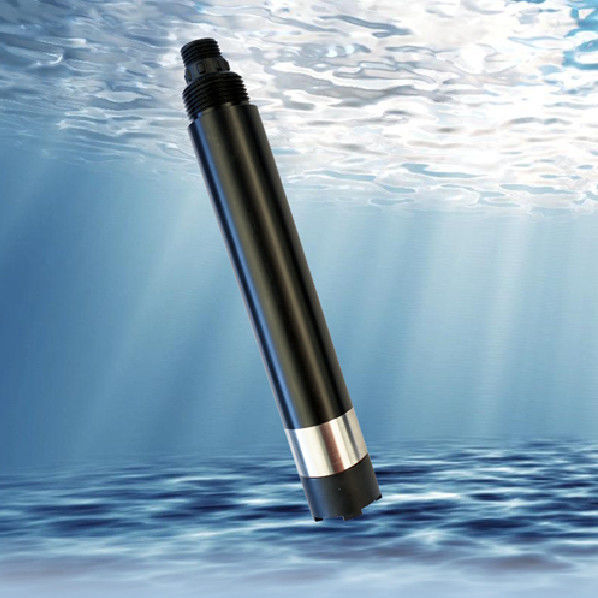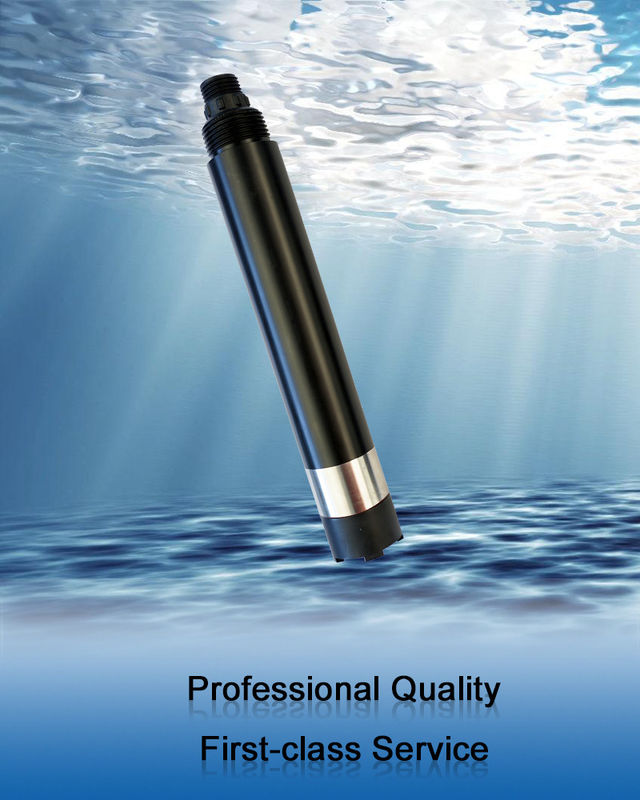KFDO310 integrated on-line fluorescence dissolved oxygen sensor is designed and made based on the quenching principle of excited fluorescence of specific substances in physics. The blue light from the light-emitting diode illuminates the fluorescent material on the inner surface of the fluorescent cap. The fluorescent material on the inner surface is excited and emits red light. By detecting the phase difference between the red light and the blue light, and comparing it with the internal calibration value, the concentration of oxygen molecule can be calculated, and the final value can be output by temperature automatic compensation.
No electrolytes, no polarization
No need to consume oxygen, not affected by the flow rate
Built-in temperature sensor, automatic temperature compensation
Free from chemicals like sulfides
Small drift, fast response, more accurate measurement
Maintenance-free, long service life, lower use cost
Fluorescent caps are easy to replace
RS-485 interface, Modbus-RTU protocol
| Model number |
KFDO310 |
| Measuring principle |
fluorescence |
| Range |
0ー20 mg/L (0ー200% saturation, 25 °C) |
| Resolution |
0.01 mg/l, 0.1 °C |
| Precision |
± 2% f.s. , ± 0.5 °C |
| Temperature compensation |
Automatic temperature compensation (PT1000) |
| Output mode |
RS-485 bus, Modbus-RTU protocol |
| Working conditions |
0ー45 °C, < 0.2 mpa |
| Storage temperature |
- 5 ~ 65 °C |
| Installation mode |
Immersion mounting |
| Cable length |
5 meters, other length can be customized |
| Power consumption |
< 0.05 W |
| Power supply |
12 ~ 24 VDC ± 10% |
| Protection level |
IP68 |
| Calibration |
Two-point calibration |
| Fluorescent cap life |
Guaranteed Use for one year (under normal use) |
| Material for sensor housing |
Pom and 316L stainless steel |


The temperature sensing part should be immersed below the liquid surface to avoid collision with the film head surface. The head part of the membrane should be free from sediment.
What Affects Oxygen Solubility?

Dissolved oxygen concentrations decrease as temperature increases
Two bodies of water that are both 100% air-saturated do not necessarily have the same concentration of dissolved oxygen. The actual amount of dissolved oxygen (in mg/L) will vary depending on temperature, pressure, and salinity.
First, the solubility of oxygen decreases as temperature increases ¹. This means that warmer surface water requires less dissolved oxygen to reach 100% air saturation than does deeper, cooler water. For example, at sea level (1 atm or 760 mmHg) and 4°C (39°F), 100% air-saturated water would hold 10.92 mg/L of dissolved oxygen. ³ but if the temperature were raised to room temperature, 21°C (70°F), there would only be 8.68 mg/L DO at 100% air saturation.
Second dissolved oxygen decreases exponentially as salt levels increase ¹. That is why, at the same pressure and temperature, saltwater holds about 20% less dissolved oxygen than freshwater.

 Your message must be between 20-3,000 characters!
Your message must be between 20-3,000 characters! Please check your E-mail!
Please check your E-mail!  Your message must be between 20-3,000 characters!
Your message must be between 20-3,000 characters! Please check your E-mail!
Please check your E-mail! 


